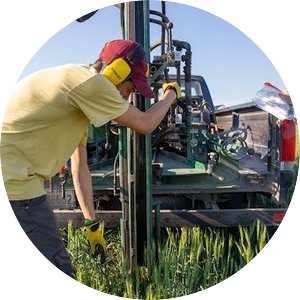S415 Soil Science Building (masks requested) & Zoom
Subsurface drainage is a common practice to support agricultural production in fields with poorly drained soils. This practice is becoming increasingly common in the Upper Midwest and NW Minnesota, where changing precipitation patterns are generating an increased need for artificial drainage systems. These systems increase yields, and over time, can reshape the soil ecosystem. By changing soil moisture throughout the profile, drainage can alter microbial activity and soil physical properties. In the first chapter of this study, we examine how drainage installation impacts N cycling. In the two years following subsurface drainage installation, we observed several differences between the drained and undrained treatments: soil nitrate concentrations (NO3-), nitrous oxide (N2O) emissions, N mineralization, and edge of field losses. In the second chapter, we examined the longer-term impacts of drainage on physical and soil health properties by sampling six on-farm sites. Three of these sites had their most recent drainage system installation before 2005; the remaining three had installations prior to 2015. The fields with older drainage systems demonstrated more rapid water movement and increased biological activity. Together, both studies identify the importance of understanding how drainage systems alter the soil ecosystem and demonstrate drainage’s importance in management decisions. Additionally, they point to a need for more long-term drainage studies which focus on a wider range of soil properties.

Aaron Frankl, LAAS master's student advised by Dr. Anna Cates and Dr. Lindsay Pease
